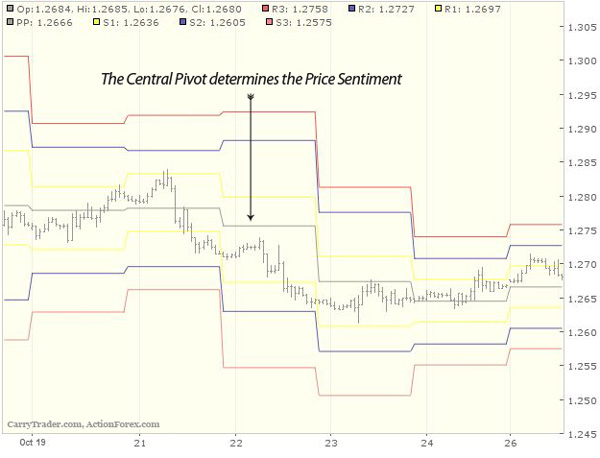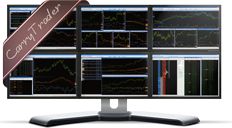Pivot Points When Trading Forex
Pivot Points at a Glance
- Name: Pivot Points
- Usage: Determines Resistance & Support / Forecasts Trend Reversals
- Trading Signals: Not Accurate
- Timeframes: from 1 hour to 1 month
- Standard Settings: The average price of the previous day’s High, Low, Close
- Crucial Levels: When the price of an asset reaches close to a Pivot Point
Pivot Points Explained
Pivot Points are frequently used by Forex professional traders. A pivot point is calculated as the average price of high, low, and closing price based on the previous trading day. Some traders are using also the opening prices to calculate the pivot point, therefore, the pivot, in that case, is the average price of Open, High, Low and Close.
Technical Behavior:
-The price of financial assets tends to test heavily the pivot points before move higher or lower, therefore, pivots determine support and resistance levels
-If the price of an asset is trading above the pivot point is thought a bullish market and if it is trading below the pivot point indicates a bearish market
-The accuracy of trading signals based on pivot pivots increases at times when a formation of a Japanese candlestick is also identified
Chart: Calculating Support and Resistance Levels

Important Notes:
-Forex traders usually import the pivots of the daily charts and apply them in intraday charts
-You can calculate also weekly and monthly pivots along with day pivot
-When you are trading in short periods you should use the 1-Hour or the 4-Hour Pivots
-Day traders are usually using 4-Hour pivots while Swing traders are using daily pivots
-Forex exchange rates respond better to resistance and support levels formed by the pivot points, than shares or indices
Calculating Forex Pivot Points
As you can see in the following calculation formulas, 4 main support and resistance levels are deriving from a single pivot point (R1, S1, R2, and S2)
The classic calculation for a pivot point (P) is as follows:
- Pivot Point = (High + Low + Close) / 3
Support and resistance levels based on a pivot point are calculated using these formulas:
■ 1st level of support and resistance (R1) and (S1):
- First Resistance = (2 x Pivot) - Low
- First Support = (2 x Pivot) - High
■ 2nd support and resistance (R2) and (S2):
- Second Resistance = Pivot + (R1-S1)
- Second Support = P - (R1- S1)
Related Links: ► Daily Forex Pivots at DailyFx | ► Daily Forex Pivots at ActionForex
MORE ON CARRYTRADER
| ■ COMPARE PROVIDERS | ► Brokers for Carry Traders | ||||||
| ■ INDICATORS | » MACD | » Parabolic SAR | » Ichimoku Kinko Hyo | » Pivot Points | » Relative Strength Index | ||
| ■ CURRENCY PAIRS | » EURUSD | » GBPUSD | » USDJPY | » EURGBP | » AUDUSD | » NZDUSD | » USDCAD |
■ Pivot Points and Forex Trading
CarryTrader.com






